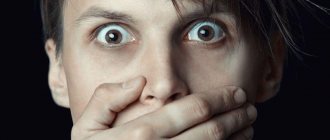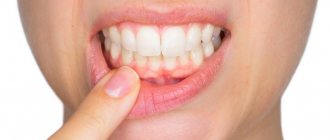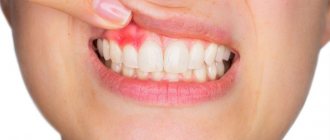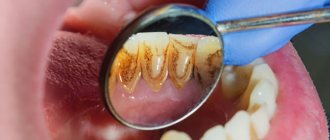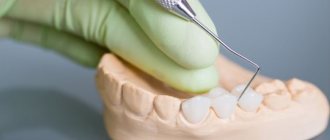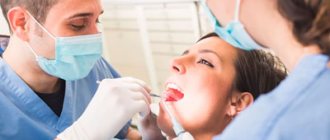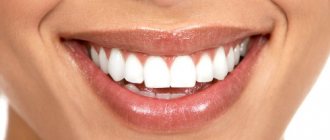This white ball is not the root of the hair, as is often thought. In fact, this is a dead bulb, which is located at the very beginning of each hair, and accordingly, with normal hair development and cyclical hair loss, we will always observe this white thickening in the form of a white tip. But if the fallen hair does not have such a white tip, then this means that the hair broke off for some reason before leaving the head. Most likely, this can be caused by the use of a hair dryer, frequent curling or dyeing, as well as increased hair porosity. Hair treatment shampoos and conditioners will help solve this problem.
You should sound the alarm if hair loss with a white tip begins to exceed your normal daily norm, or if the tip (bulb) is dark in color.
Normal or disease?
Trichologists say that daily loss of up to 40-60 hairs is considered normal, since hair tends to renew itself.
Body tissues have their own lifespan. Curls go through four states: growth, dormancy, dying, and loss. In a healthy person, 85-95% of growing hair, 1.5 - 2% of hairs are at rest, less than half a percent is occupied by “obsolete” curls. They are found during daily combing, washing your hair, running your hand through your hair, and on clothes.
Owners of long strands or thick curls have many reasons for concern: it is impossible to physically notice when dead strands fall out: they get tangled in the general mop and remain in the hands only when washing your hair. A person thinks that there are many of them, but this is not so.
Pathological hair loss can be determined after washing, drying, and styling curls. To do this, run your hands over your hair and see how many hairs with a white tip are on your palm. Only if there are more than 20-30 of them, they talk about alopecia - unhealthy hair loss.
Types of dandruff
Seborrhea has two subtypes, it is divided into dry and oily. If, after washing the strands and drying them, your head begins to itch, and grains of a white hue are noticed in the curls, then you have dry seborrhea . Most often, the hair becomes brittle and splits.
Dry seborrhea is the most common type of dandruff, which causes a lot of trouble for those who suffer from it. Of course, because the grains have a tendency to fall off, and this significantly affects the appearance.
If washing your hair does not bring the desired effect, and the strands remain just as unkempt, then you are faced with oily seborrhea . In this case, no shedding of white particles occurs, however, the appearance still leaves much to be desired.
Since the grains are saturated with lard, fungi begin to multiply here. The curls look dirty in appearance, and the skin becomes very inflamed, which is why the hair begins to fall off.
Hair with a white tip is falling out: what to do?
When a whole strand appears on the comb, you should look at it carefully. Has your hair fallen out with a white tip? This suggests that the curl has not broken, but has outlived its useful life. The white color is not the root, as many people think, but a mature hair follicle that is ready to fall out. She will no longer be able to hold the hair and nourish it with vitamins and microelements. A follicle remains in the scalp, from which a new curl will later grow. If curls are lost intensively, then the follicle freezes - new curls may not grow.
The pathological process of alopecia does not go unnoticed: after a short time, the hair becomes noticeably thinner, and bald spots appear in place of ungrown curls. In this case, the help of doctors is needed: a trichologist. dermatologist, endocrinologist.
Features of the disease
White piedra, also known as trichosporia nodosum, Bejel's disease. This disease is an anthroponotic mycotic lesion of the hair cuticle. In simple terms, white piedra is a fungal hair disease. The disease is called nodular trichosporia because the spores of the fungus compress to form nodules.
This disease can more often be found in countries with a warm, tropical climate. It was first described in 1866. Doctors Y. Knoch, K. Lindeman discovered a fungus that provokes the development of the disease. This is Trichosporon beigelii.
White piedra is more common among men. The disease is especially common among those who wear a mustache, often curl it, and lubricate it with cosmetics. The fungus prefers straight hair, people with excessive sweating, damaged hair.
Nodular trichosporia (photo)
Causes of White Tip Hair Loss
There are many reasons why white-tipped hair falls out. Curls quickly respond to changes in physical and psycho-emotional health. A person facing such a problem should undergo a comprehensive examination. White-tipped hairs may fall out due to:
- states of nervousness, frequent stress, anxiety, insomnia, lack of sleep, non-compliance with the regime;
- hereditary factors;
- hormonal imbalances, increased levels of hormones, pregnancy and childbirth, menopause;
- various diseases: dermatological, oncological, respiratory;
- exposure to medications: antibacterial drugs, narcotic drugs, anesthetics;
- unfavorable external influences: area of residence, ecology, exposure to direct sunlight, frequent use of chemical styling products, over-drying with a hairdryer;
- improper nutrition: vitamin deficiency, diets, uneven intake of proteins, fats and carbohydrates in the body;
- bad habits: smoking, excessive drinking.
Who most often suffers from dandruff?
It has long been proven that seborrhea most often occurs in people whose hair is oily . This occurs due to dysfunction of the sebaceous gland, which in turn occurs due to poor metabolic processes.
The following categories of people are also prone to developing this disease:
- who suffers from vitamin deficiency;
- are under prolonged stress;
- do not eat properly;
- who uses other people's hygiene products;
- They use low-quality hair washing products.
Hair falling out without a white tip: what to do?
Sometimes hair falls out without a white tip, which is a legitimate concern. If a hair falls out with a black bulb, this means that it has not yet aged, the curl was not ready for physiological renewal. If you experience frequent loss of curls with black ends, you should definitely find out the cause with your doctor, otherwise you may lose your hair completely.
If the comb shows strands that have neither a black nor a white bag, and identical ends are visible on both sides, then we can talk about increased fragility of the curls. Proper care, as well as following the advice of a trichologist, most often helps to solve this problem.
Conclusion
The presence of white dots on the hair may indicate either a careless attitude towards your curls or a serious illness that requires the intervention of a specialist. Be that as it may, such changes are your hair’s “cry” for the necessary help!
All we have to do is offer a video in this article that will answer the questions that have arisen.
Did you like the article? Subscribe to our Yandex.Zen channel
Text \ Photo Ekaterina Posted 07/10/2015
0
To favorites
To print
If you want to thank, add clarification or objection to the author - add a comment!
Currently being discussed:
- Lyubov Burkina
20.08.2018What hair color should I choose? Please give me some advice. I don't know which one I have...
- I
19.08.2018I had eyelash extensions for 6 months and took a break. After 3 months I increased it again...
- Vasilisa
18.08.2018Cool hairstyle
- Marina
18.08.2018Hi, can I dye my bleached hair (currently red) bright purple...
- Daria
16.08.2018Hello! I am a dark girl with black eyes. I want to dye my hair dark...
- Loredana
15.08.2018The photo shows young beauties. Can older ladies have their eyebrows done? Age...
Comments »
Treatment of alopecia
People facing loss of curls turn to trichologists with the question: hair with a white tip is falling out - what to do in this case? Experienced specialists recommend that the patient undergo a dermatological examination to rule out skin infections; take hormone tests and get an endocrinologist's opinion. Women should consult a gynecologist and, if necessary, adjust the dosage of hormonal contraceptives.
With the results of the research, you need to go to a trichologist, who will write out a treatment plan. Most often, in case of hair loss with a white tip, medications are prescribed that stimulate the growth of curls and stop the process of alopecia (growth activators, specialized complexes for restoring hair); physiotherapeutic (ozone treatment, mesotherapy, use of laser technologies) and cosmetic procedures that strengthen hair (massage shower, use of medicated shampoos, balms, rinses, masks).
Trichophytosis
The causative agents of this pathology are mycoses (fungi).
Due to damage by mycotic elements, growth stops, fragility increases and hair breaks at the base of the scalp. The broken areas look like dark dotted formations. They are usually localized in the occipital and temporal regions.
- The hair shaft breaks off at the point where it exits the scalp.
- It is difficult to diagnose because the onset of the disease is not pronounced: single fractures are difficult to detect. Bald spots become noticeable only after a significant aggravation and spread of the disease to lesions with a diameter of 1 - 2 cm. By this point, from one to three months have passed, the mycoses have shifted to the middle and deep subcutaneous layers.
- In some cases, mycoses of a trichodermal nature, in the absence of correct treatment, spread to the keratin layer of the nail plates of the hands and feet and become systemic.
- In connection with the visualized foci of dark dots, the disease acquired the name “black dot trichophytosis”.
- The causative agents of a number of trichophytosis are anthropophilic fungi, specific parasites of the skin and the internal cavity of human hair.
- Another category of pathogens are zooanthropophilic fungi. These mycoses are transmitted to humans through contact with animals. They surround the hair follicle and cause inflammation.
- In boys, self-healing may occur in the first year of life.
- In girls, in the absence of targeted treatment, it becomes chronic and causes severe hair thinning, and in severe cases, complete baldness.
- Infection through tactile contact with sick animals (cows, horses, mice, stray cats and dogs).
- During communication with people who are carriers of “black dot trichophytosis”.
- Use of personal hygiene items for sick people. The fungus colonizes and the hyphae gradually grow into the skin structures.
- Acute hypovitaminosis of vitamin A reduces immunity to fungal diseases.
- Dysfunction of the endocrine system (multiple dysfunctions of the endocrine glands).
- Based on the classic manifestations, the dermatologist classifies the symptoms and gives directions for all the necessary tests.
- If necessary, the diagnosis of a newborn is agreed upon by a mycologist and an infectious disease specialist.
- A scraping is taken for microscopic examination for the presence of mycorrhiza. The mother can get acquainted with the results of the analysis in half an hour - an hour.
- In some cases, differential diagnosis is carried out with cultural identification of the pathogen. To obtain results, you need to wait a few days (4 - 7), during which, during a bacterial analysis on a nutrient medium, the spores obtained from scraping the newborn’s head will germinate. This type of analysis allows you to determine the sensitivity of the fungus to various types of drugs.
Thick hair: care rules
After treatment, hair follicles and roots require special nutrition and protection.
To make your curls look healthy, you need:
- Wash them no more than 2-3 times a week with products containing natural ingredients.
- Use purified water for washing (hard water leaves mineral deposits on curls).
- Wash your hair with warm or cool water: hot water destroys the hair follicle and the hair falls out with a white tip (photo can be found on the Internet)
- Take a contrast shower, rinse your hair with water or herbal decoction at room temperature.
- Use a wooden comb or natural bristles (they are less damaging to the hair follicles than plastic and metal ones).
- Use personal hygiene items to avoid getting a fungal infection.
- Avoid chemical dyes.
- During the period of bright sun, cover your head from the negative influence of bright rays.
- Humidify the air in the room while heaters and central heating radiators are operating. A dry atmosphere destroys the follicle, curls become thinner and break more often.
- Eat right, enriching the body with magnesium and calcium, proteins, iron.
Diesel Forum
p.s.: as for me, I think that it is better to accustom yourself to take care of your hair in advance, well, periodically the body cleanses itself of toxins, go on a diet, drink vitamins, and of course masks, balms, sprays, etc.
Pysy: I’ll probably continue to periodically make a pepper mask for myself, since I don’t have an advanced version, it should help.
By the way, about the scrub! I read a lot about him on the internet and did it. I did this: salt + chamomile infusion + a couple of drops of rosemary + yolk. The impression left was twofold: when I washed my hair, the entire bathtub was full of hair. Moreover, it always got in my way when washing, but so be it! I was already scared, I thought I would go bald. But then the hair didn’t come out until the next wash. I looked and there was no hair on the sweaters. I got the impression that before he climbed gradually, little by little and constantly, and after the scrub once, all at once.
Folk remedies in the fight against alopecia
You can strengthen hair follicles, saturate the skin with nutrition, and reduce the number of hairs falling out with a white tip not only with the help of artificial components and physical procedures, but also with natural products containing vitamins and minerals.
A plant that quickly helps with alopecia is the standard onion, which contains microelements responsible for the growth of curls. Onion masks are done regularly, 1-2 times a week. The onion is peeled, grated or in a blender, then the juice is squeezed out of it. It is applied to the curls and then wrapped in a terry towel for 20 minutes.
You can add other ingredients to onion juice: honey, eggs, brewer's yeast, coconut oil. The products soften the hair and make it silky. After the mask, cosmetic clay, diluted apple cider vinegar, and a drop of lemon or orange essential oil added to the rinse mixture can cope with the smell of onions. After 4-5 regular procedures, curls will begin to fall out by 10-12%.
Another natural remedy that stimulates curl growth is sea salt. A head massage with sea salt will nourish your hair with iodine and minerals. Massage the skin with your fingers in a circular motion, making efforts to absorb the salt.
Such procedures are especially effective for oily hair: salt has a drying effect, and hair looks well-groomed for a long time. Sea salt kills bacteria and fungi, so its use is especially justified in people suffering from seborrhea or dandruff.
The third effective remedy against alopecia is burdock oil. It is rubbed into the scalp and left for 20-30 minutes, tied with a towel. Then wash off with mild shampoo.
Trichoclasia nodosa
Trichoclasia nodosa affects up to 17% of women living in large cities.
The term “trichoclasia nodosa” hides a disease that manifests itself as excessive hair fragility. Trichoclasia is often confused with split hair, but with this disease the hair shaft breaks off at a distance of 7-8 cm from the roots.
Pay attention! Trichoclasia nodosa affects hair not only on the head; mustaches, beards and even pubic hair can get into the “paws” of the disease.
Brown hair with snow-white tips or strands densely affected by snow-white dots may indicate that longitudinally located breaks have appeared on the hair cuticle, which will then cause damage to the cortex.
A small “knot” appears at the site of the break, which, when combed, becomes a place where the hair breaks off. Trichoclasia does not lead to damage to the structure of the rod, only the medulla is missing at the site of the break.
Pseudo-diagnoses and diagnosis
Photo of hair diagnostic procedure
The disease appears entirely due to external influences:
- shampoos unsuitable for hair type;
- systematic creation of backcombing in hair;
- “hot” styling methods;
- long ultraviolet radiation.
In very rare cases, the prerequisite for trichoclasia is a congenital pathology or genetic diseases, such as Netherton's syndrome.
From the outside, the disease resembles a fungal infection of snow-white or dark piedra. Microscopic fungus also accumulates on the hair shaft, but does not lead to hair breakage. The possibility of such infection can be excluded through laboratory tests.
Microscopic examination of the hair shaft allows us to exclude the possibility of monilethrix and pseudomonilethrex, which appear as brittle and excessively dry hair. The rod warped by monilethrix has a heterogeneous structure; thinning and swelling are also noticeable.
A disease such as trichonodosis is manifested by the formation of nodules in which dust, fat and small organisms accumulate. The difference between trichoptilosis and trichoclasia is that the first disease is characterized by splitting at the ends of the hair, and the second - at the breakage site.
Healing trichoclasia
To treat trichoclasia, vitamin therapy is prescribed - taking vitamins E and A. Among folk methods, oil wraps, masks with honey and cream have proved their extraordinary effectiveness.
Coconut oil is a storehouse of microelements and antioxidants that can immediately solve several problems with your curls.
Warm coconut, olive or sea buckthorn oil is applied to the entire length of the hair and insulated with a heated terry towel. After 2 hours, the remaining oily consistency is removed with warm water and mild shampoo.
An oil solution of vitamins E and A, as well as essential oils of tea tree, ylang-ylang and citrus fruits, which are added in an amount of 2-3 drops for every 2 tbsp, will help make the wrap more effective. spoons of the consistency of base oils.
To “vitaminize” the mask, you can use not only an oil solution, but also vitamins in gelatin capsules, which are carefully opened with nail scissors.
Decoctions of herbs (burdock root, chamomile and nettle) are useful, which can be used as a base for a mask or rinse. A tablespoon of herb is poured into a glass of boiling water and infused in a thermos for 2 hours. Dried herbs can be boiled in the same proportion, pouring boiling water over them and continuing to simmer over low heat for 10 minutes.
To make a decoction, you can use fragrant linden blossom, which will be appreciated by owners of light curls
For dry hair, masks containing lemon juice, alcohol and henna, which dry out even more, are contraindicated.
Cost of coloring
Depending on the type, creative coloring for short hair has different prices. This takes into account the length of the strands, the amount of paint applied, etc. So, balayage, ombre and other similar techniques will cost approximately 2500–3000 rubles. And painting on a square is a little more expensive (the price will increase by 300 rubles). Bronding costs about 1,500–2,000 rubles, and a regular one-color one costs about 1,000 rubles. Hair coloring for short haircuts with one color and without ammonia will cost up to 1900 rubles. Toning - up to 2000 rubles.
Hair dyeing for short haircuts at home will cost less. But here you also need to consider how many colors you will use in your work, whether you will pre-bleach your hair, tint it, etc. As a guide, one package of paint costs from 300 rubles, the price of a clarifier also fluctuates within such limits.
A high-quality tinting agent will cost approximately 750–850 rubles. There are products with a lower cost, but it is better to choose well-known brands. This will avoid possible negative consequences in the form of a rash, unexpected color and other surprises.
Important! Cheap analogues are not always tested for product quality, so use trusted brands.
Such prices show that salon painting is not such an expensive pleasure, especially if creative coloring is planned. But it’s worth considering that one package of dye for very short curls will be enough for more than one time. Especially if certain areas are to be painted. So if you are confident in your abilities, or are not afraid to experiment with your appearance, go ahead and create fashionable coloring for short hair yourself.
Shades for dark hair
In order for coloring dark curls to highlight the advantages of your face, it is also worth choosing shades according to the color of your skin and eyes:
- brown-eyed dark-skinned women can safely use a palette of milk chocolate, hazelnut, caramel;
- fair-skinned women with dark eyes will highlight their beauty with purple and chocolate colors;
- pale skin will sparkle with new colors thanks to the color scheme of caramel, honey, amber shades, as well as the color of cinnamon;
- and ruddy cheekbones will be favorably set off by colors - chestnut, walnut, dark chocolate, mocha.
